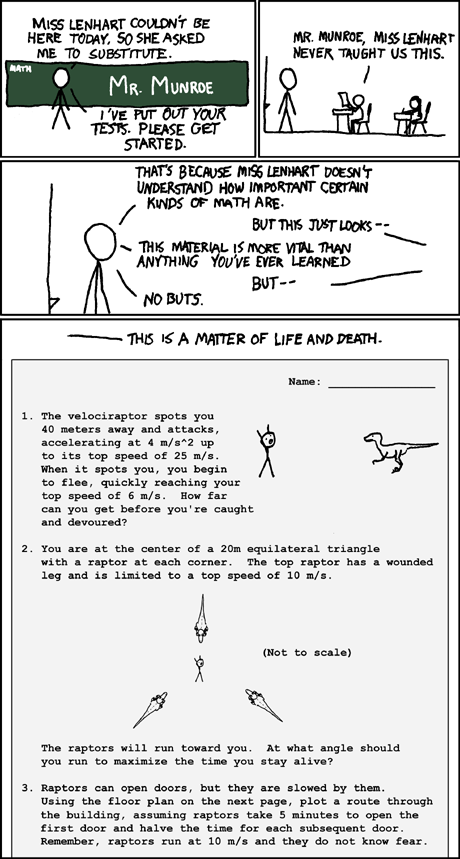Today, we are going to solve the second question of this xkcd: https://xkcd.com/135/

You’re at the centre of a 20m equilateral triangle with a raptor at each corner. The top raptor has a wounded leg and is limited to a top speed of 10 m/s.
The raptors will run toward you. At what angle should you run to maximize the time you stay alive?
(It is assumed that you have a speed of 6m/s and the unwounded velociraptor has a top speed of 25 m/s, from the first question). We are also removing the fact that the velociraptors and you have to speed up, and assume they are going at full speed at the start.
Pursuit curve
First, we are going to take a look at the following problem:
Assume a velociraptor starts running in your direction with a speed of times you speed, while you start at point running in the direction, what is the distance you can run?
According to wikipedia, the coordinate of the capture point is
Thus the distance ran is
If we swap by and by and by we get:
The time you can stay alive is relative to the distance you can run, as you can run at constant speed. If the angle you run at is , the time you stay alive in total is the minimal time you stay alive considering each individual raptor.
So the minimal of these three expressions:
Where is your speed over the speed of the wounded velociraptor and is the speed of a healthy velociraptor over your speed . Plotting the survival time for each velociraptor gives us the following figure.
We get a rather surprising result. The bottom velociraptors can catch up with us before the top one, independent of the angle, so we can ignore it. This also means that the optimal strategy is running towards the wounded velociraptor.